1.7 Curvilinear Coordinates
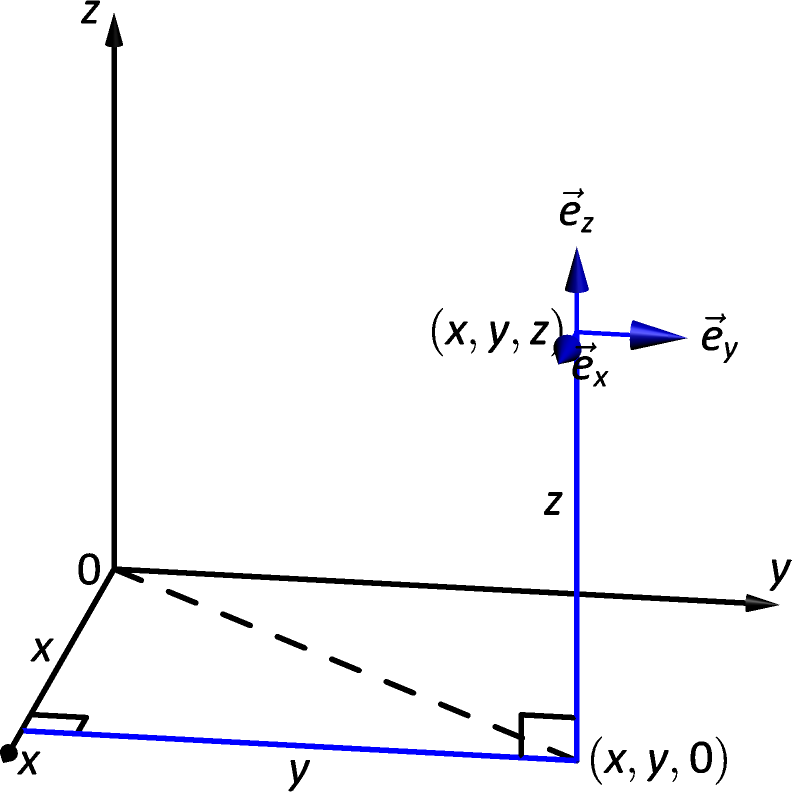
(a)
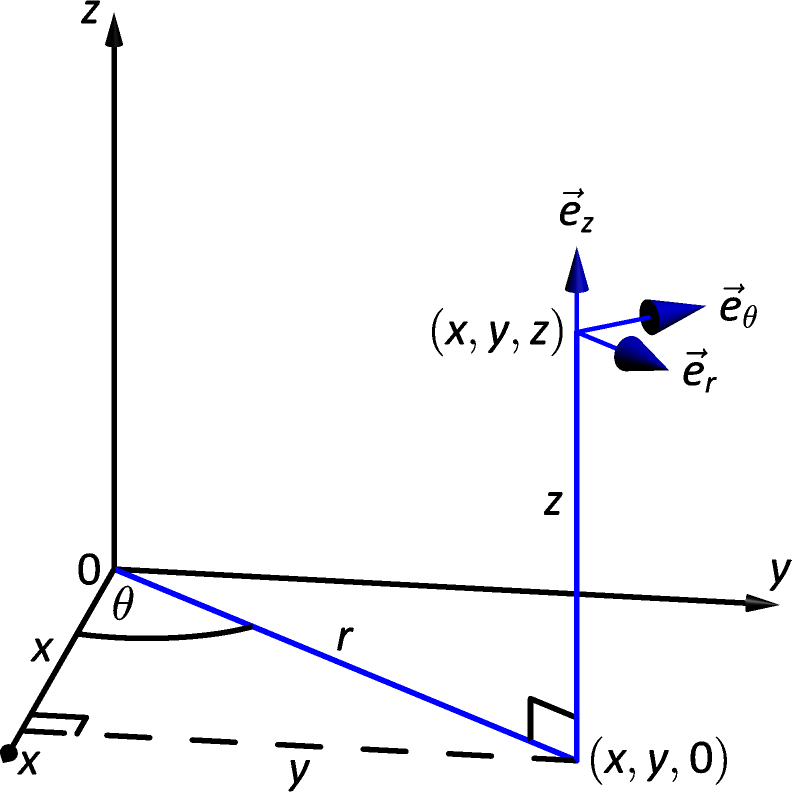
(b)
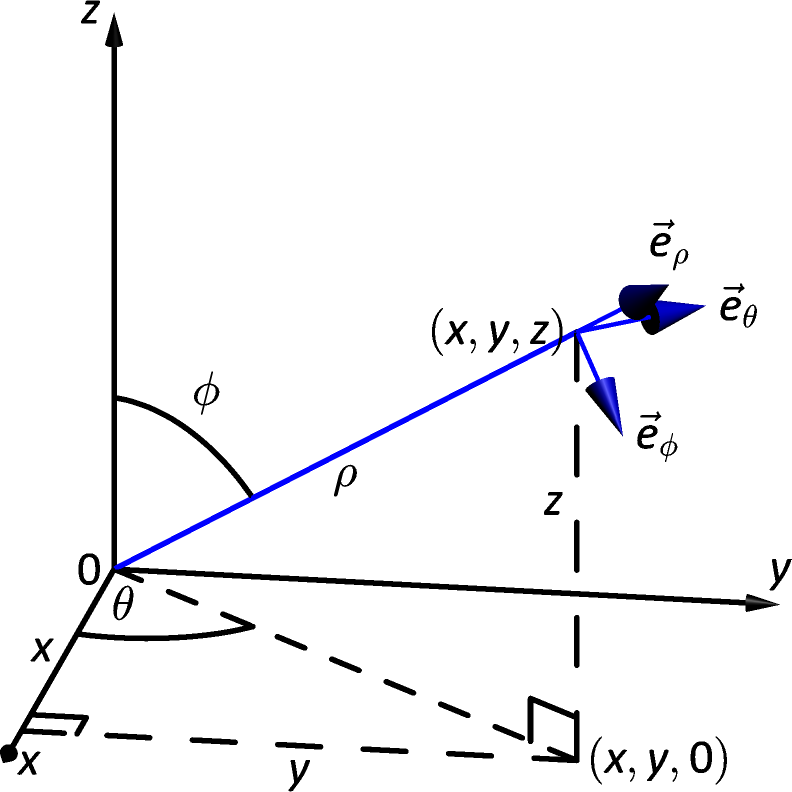
(c)
The Cartesian coordinates of a point are determined by following straight paths starting from the origin: first along the -axis, then parallel to the -axis, then parallel to the -axis, as in Figure 1.62(a). In curvilinear coordinate systems, these paths can be curved. The two types of curvilinear coordinates which we will consider are cylindrical and spherical coordinates. Instead of referencing a point in terms of sides of a rectangular parallelepiped, as with Cartesian coordinates, we will think of the point as lying on a cylinder or sphere. Cylindrical coordinates are often used when there is symmetry around the -axis; spherical coordinates are useful when there is symmetry about the origin.
Let be a point in Cartesian coordinates in , and let be the projection of upon the -plane. Treating as a point in , let be its polar coordinates (see Figure 1.62(b)). Let be the length of the line segment from the origin to , and let be the angle between that line segment and the positive -axis (see Figure 1.62(c)), which is called the zenith angle. Then the cylindrical coordinates and the spherical coordinates of are defined as follows:
Key Idea 9 Cylindrical coordinates
where if and if .
This “standard” definition of spherical coordinates used by mathematicians results in a left-handed system. For this reason, physicists usually switch the definitions of and to make a right-handed system.
Key Idea 10 Spherical coordinates
where if and if .
Both and are measured in radians. Note that , , and . Also, is undefined when , and is undefined when .
Example 1 Converting Between Coordinate Systems
Convert the point from Cartesian coordinates to 1. cylindrical and 2. spherical coordinates.
Solution
-
1.
and , since . Therefore .
-
2.
and radians. Therefore .
For cylindrical coordinates , and constants , and , we see from Figure 1.63 that the surface is a cylinder of radius centered along the -axis, the surface is a half-plane emanating from the -axis, and the surface is a plane parallel to the -plane.
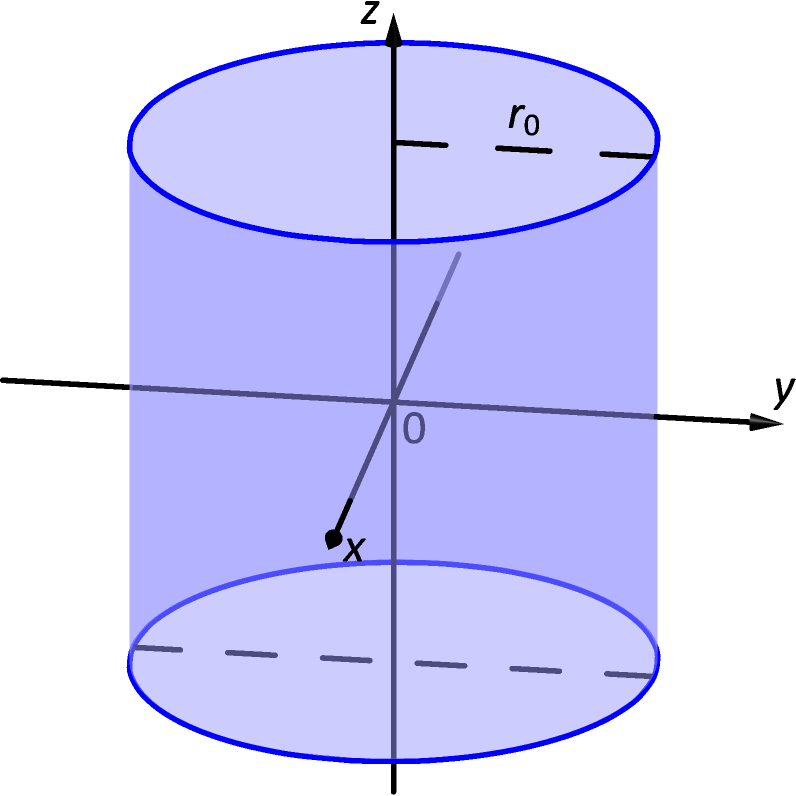 |
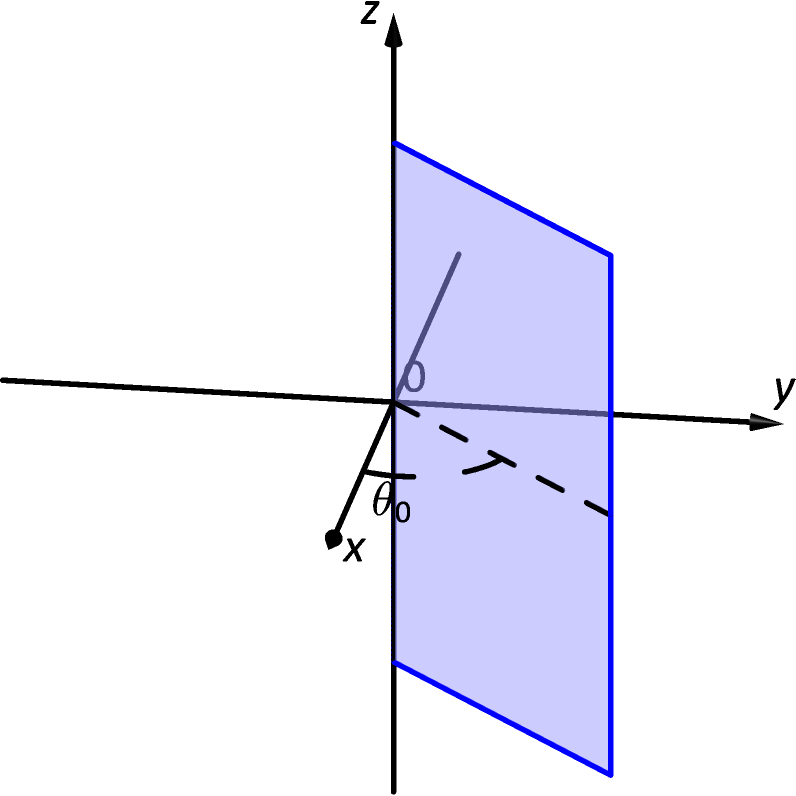 |
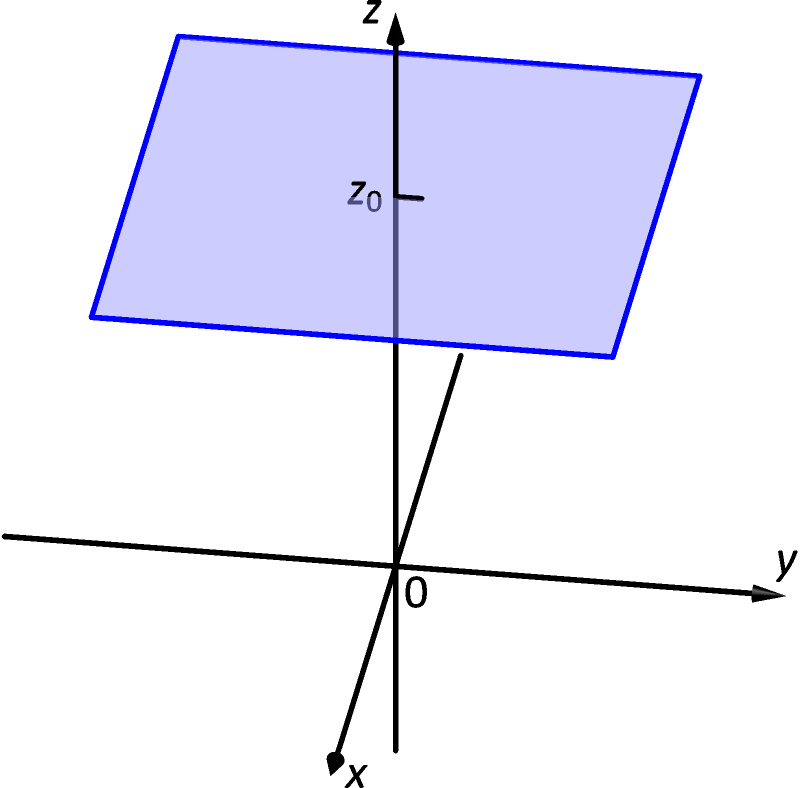 |
| (a) | (b) | (c) |
For spherical coordinates , and constants , and , we see from Figure 1.64 that the surface is a sphere of radius centered at the origin, the surface is a half-plane emanating from the -axis, and the surface is a circular cone whose vertex is at the origin.
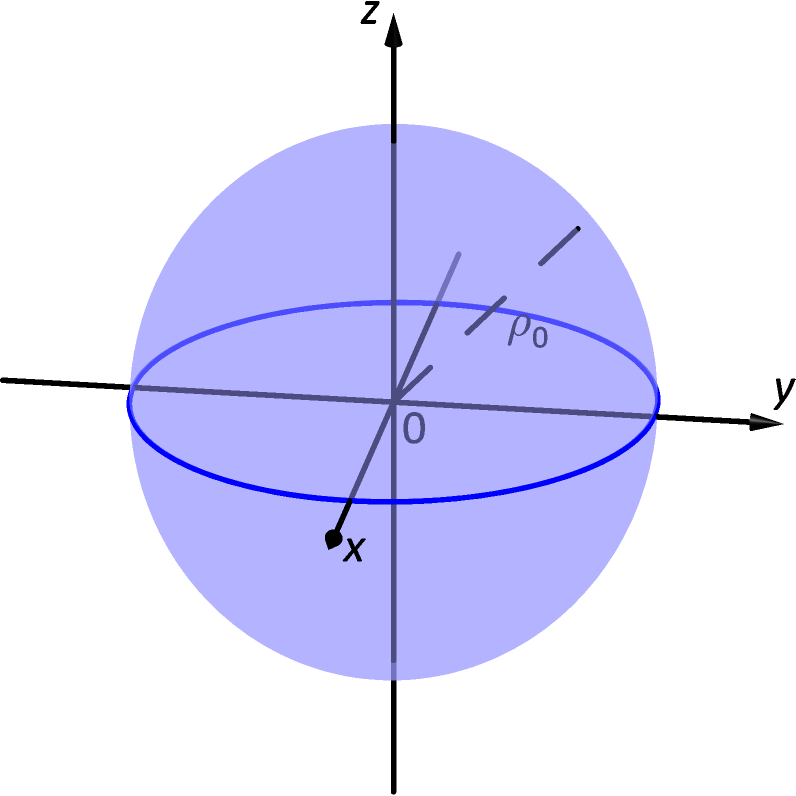 |
 |
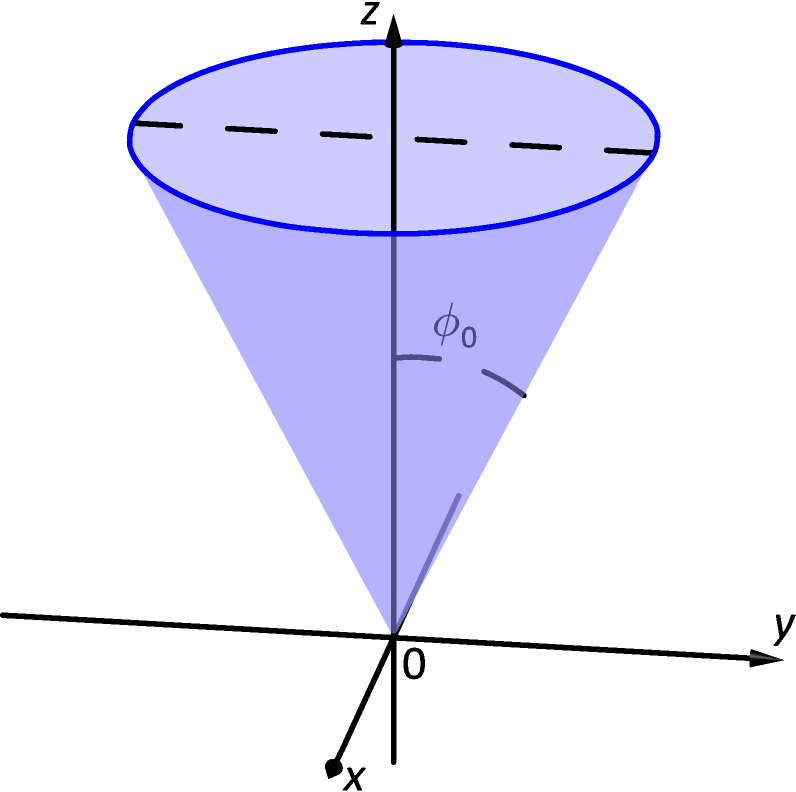 |
| (a) | (b) | (c) |
Sometimes the equation of a surface in Cartesian coordinates can be transformed into a simpler equation in some other coordinate system, as in the following example.
Example 2 Converting an Equation in Coordinate Systems
Write the equation of the cylinder in cylindrical coordinates.
SolutionSince , then the equation in cylindrical coordinates is .
Using spherical coordinates to write the equation of a sphere does not necessarily make the equation simpler, if the sphere is not centered at the origin.
Example 3 Converting an Equation to Spherical Coordinates
Write the equation in spherical coordinates.
SolutionMultiplying the equation out gives
after combining terms. Note that this actually makes it more difficult to figure out what the surface is, as opposed to the Cartesian equation where you could immediately identify the surface as a sphere of radius centered at .
Example 4 Identifying a Surface
Describe the surface given by in cylindrical coordinates.
SolutionThis surface is called a helicoid. As the (vertical) coordinate increases, so does the angle , while the radius is unrestricted. So this sweeps out a (ruled!) surface shaped like a spiral staircase, where the spiral has an infinite radius. Figure 1.65 shows a section of this surface restricted to and .
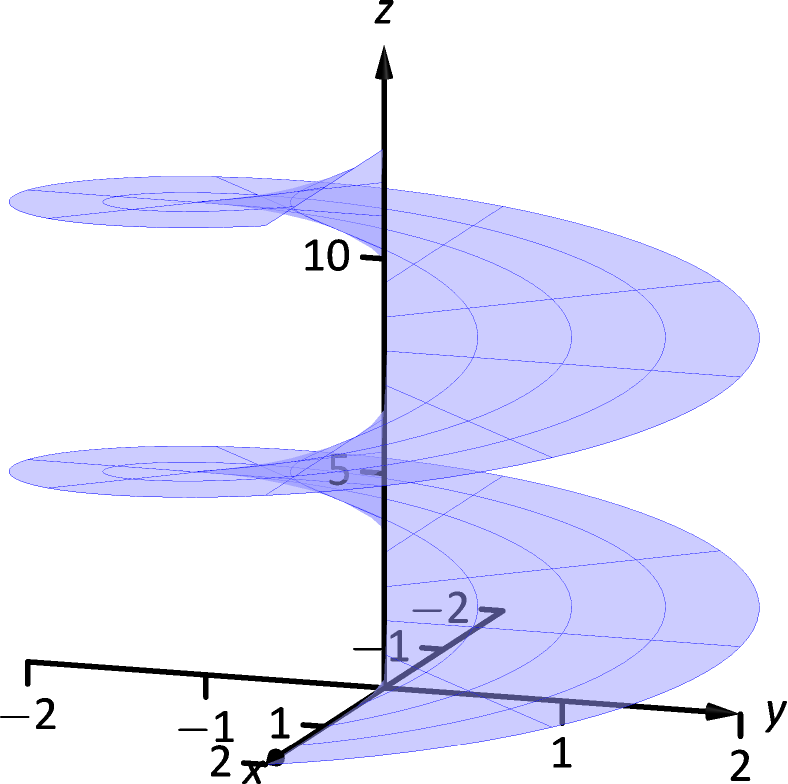
Exercises 1.7
Problems
In Exercises 1–4, find the (a) cylindrical and (b) spherical coordinates of the point whose Cartesian coordinates are given.
-
1.
-
2.
-
3.
-
4.
In Exercises 5–8, find the Cartesian coordinates of the point whose cylindrical coordinates are given.
-
5.
-
6.
-
7.
-
8.
In Exercises 9–12, find the Cartesian coordinates of the point whose spherical coordinates are given.
-
9.
-
10.
-
11.
-
12.
In Exercises 13–15, describe the set given by Cartesian inequalities in cylindrical.
-
13.
-
14.
and
-
15.
and
In Exercises 16–18, describe the set given by Cartesian inequalities in spherical.
-
16.
-
17.
and
-
18.
, , and
In Exercises 19–23, write the given equation or region in (a) cylindrical and (b) spherical coordinates.
-
19.
-
20.
-
21.
-
22.
, , and
-
23.
-
24.
Describe the intersection of the surfaces whose equations in spherical coordinates are and .
-
25.
Consider a solid sphere of radius centered at the origin. Remove the solid circular cylinder of radius centered along the -axis. Describe this region with cylindrical inequalities.
-
26.
Describe the region below the top of the sphere of radius centered at the origin and above the cone in spherical coordinates.
-
27.
Give an equation for the sphere of radius with center at the origin in (a) Cartesian (b) cylindrical (c) spherical
-
28.
Find the center and radius of the sphere given by the spherical equation
-
29.
Show that for , the equation in spherical coordinates describes a sphere centered at with radius .
-
30.
Let be a point in spherical coordinates, with and . Then lies on the sphere . Since , the line segment from the origin to can be extended to intersect the cylinder given by (in cylindrical coordinates). Find the cylindrical coordinates of that point of intersection.
-
31.
Let and be points whose spherical coordinates are and , respectively. Let be the vector from the origin to , and let be the vector from the origin to . For the angle between and , show that This formula is used in electrodynamics to prove the addition theorem for spherical harmonics, which provides a general expression for the electrostatic potential at a point due to a unit charge.
-
32.
Show that the distance between the points and with cylindrical coordinates and , respectively, is
-
33.
Show that the distance between the points and with spherical coordinates and , respectively, is
